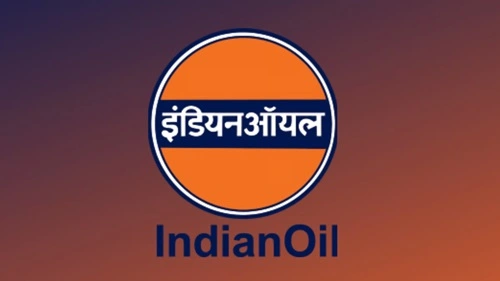Indian Oil Corporation Limited (IOCL) is the largest commercial oil and gas company in India, playing a crucial role in the country’s energy sector. Founded in 1959, IOCL is a state-owned enterprise under the Ministry of Petroleum and Natural Gas, and it dominates the Indian oil refining and distribution sector. With a vast infrastructure network and a wide product range, IOCL holds a significant share of the market for petroleum products, liquefied natural gas (LNG), lubricants, and petrochemicals. A SWOT analysis in 2024 highlights the company’s strengths, weaknesses, opportunities, and threats in the evolving global energy market.

Current Overview of IOCL
IOCL continues to be a leader in India’s oil and gas sector, operating the largest pipeline network and holding a majority share in the country’s refining capacity. The company’s revenue reached $120 billion in 2023, with a substantial workforce of over 33,000 employees. IOCL operates through multiple subsidiaries such as Chennai Petroleum and Petronet LNG, catering to diverse segments from automotive fuels to cryogenics.
Despite its dominance, IOCL is facing increasing pressure to transition to cleaner energy, driven by global sustainability goals. The company has initiated projects in renewable energy, but its heavy reliance on fossil fuels and fluctuating oil prices pose challenges.
Strengths
1. Extensive Distribution Network: IOCL operates over 11,000 km of pipelines across India, making it the largest fuel distributor in the country. This vast network ensures consistent supply and access to consumers, giving IOCL a competitive edge.
2. Market Leadership: As India’s largest oil refiner, IOCL commands the majority share in petroleum products and pipeline infrastructure. The company’s significant refining capacity (80.7 MMTPA) allows it to cater to growing domestic and international demand.
3. Diverse Portfolio: IOCL has a broad product range, from fuels and petrochemicals to lubricants and LPG. This diversification supports revenue stability and enables the company to meet the needs of various sectors.
4. Strong Brand and Loyalty Programs: IOCL’s customer retention strategies, such as the XTRAPOWER Fleet Card for large operators, and its robust marketing campaigns have strengthened its brand recognition and consumer loyalty.
Weaknesses
1. Over-reliance on Fossil Fuels: Despite growing global emphasis on clean energy, IOCL remains heavily reliant on traditional fossil fuels, with limited progress in renewable energy investments. This exposes the company to future risks as global demand shifts.
2. Bureaucratic Inefficiencies: Being a government-controlled company, IOCL often faces delays in decision-making and operational challenges due to bureaucratic oversight. This hinders the company’s agility in responding to market dynamics.
3. Limited International Presence: While IOCL has initiated expansion in countries like the UAE and the US, its global footprint remains relatively small compared to other multinational oil companies, limiting its growth potential outside India.
4. Aging Infrastructure: IOCL’s aging refineries and pipelines require significant investment for modernization, which could strain financial resources.
Opportunities
1. Renewable Energy Expansion: IOCL has the potential to lead India’s transition to renewable energy by investing more in wind, solar, and biofuels. By increasing its focus on sustainable energy sources, IOCL can position itself as a leader in green energy.
2. Natural Gas Market Growth: The rising demand for natural gas as a cleaner alternative to coal and oil provides IOCL with an opportunity to expand its LNG and CNG businesses. The company is already well-placed to take advantage of India’s push for a gas-based economy.
3. Global Expansion and Partnerships: IOCL can explore international markets more aggressively by forming alliances with global oil companies and acquiring smaller firms in developing regions. This would help diversify its revenue streams and reduce its reliance on the Indian market.
4. Technological Advancements: IOCL can invest in cutting-edge technology, such as digitalization and automation, to improve operational efficiency and reduce costs across its refining and distribution network.
Threats
1. Environmental Regulations: Increasing regulatory pressure for cleaner energy and reduced emissions presents a significant threat to IOCL’s traditional business model. Failure to comply with stringent environmental norms could result in fines or loss of market share.
2. Global Oil Price Volatility: Fluctuations in global oil prices directly affect IOCL’s profitability. Price spikes can reduce margins, while price drops could lead to inventory losses, making the company vulnerable to global market instability.
3. Rising Competition: The oil and gas sector in India is highly competitive, with players like Reliance Industries and BPCL posing significant challenges to IOCL’s market share. This intensifies the need for innovation and customer retention strategies.
4. Public Scrutiny of Fossil Fuels: As environmental groups and governments push for reduced fossil fuel consumption, IOCL faces increasing scrutiny over its carbon footprint. Public opposition to fossil fuel dependency could lead to reputational damage and policy changes that harm the company’s business model.
Conclusion
Indian Oil Corporation continues to dominate India’s energy sector due to its vast infrastructure, market leadership, and diversified product portfolio. However, the company must address key weaknesses such as its dependence on fossil fuels and slow pace in embracing renewable energy. By capitalizing on opportunities in clean energy and international markets while mitigating threats from regulatory pressures and market volatility, IOCL can maintain its leadership position in an increasingly competitive and environmentally-conscious global market.